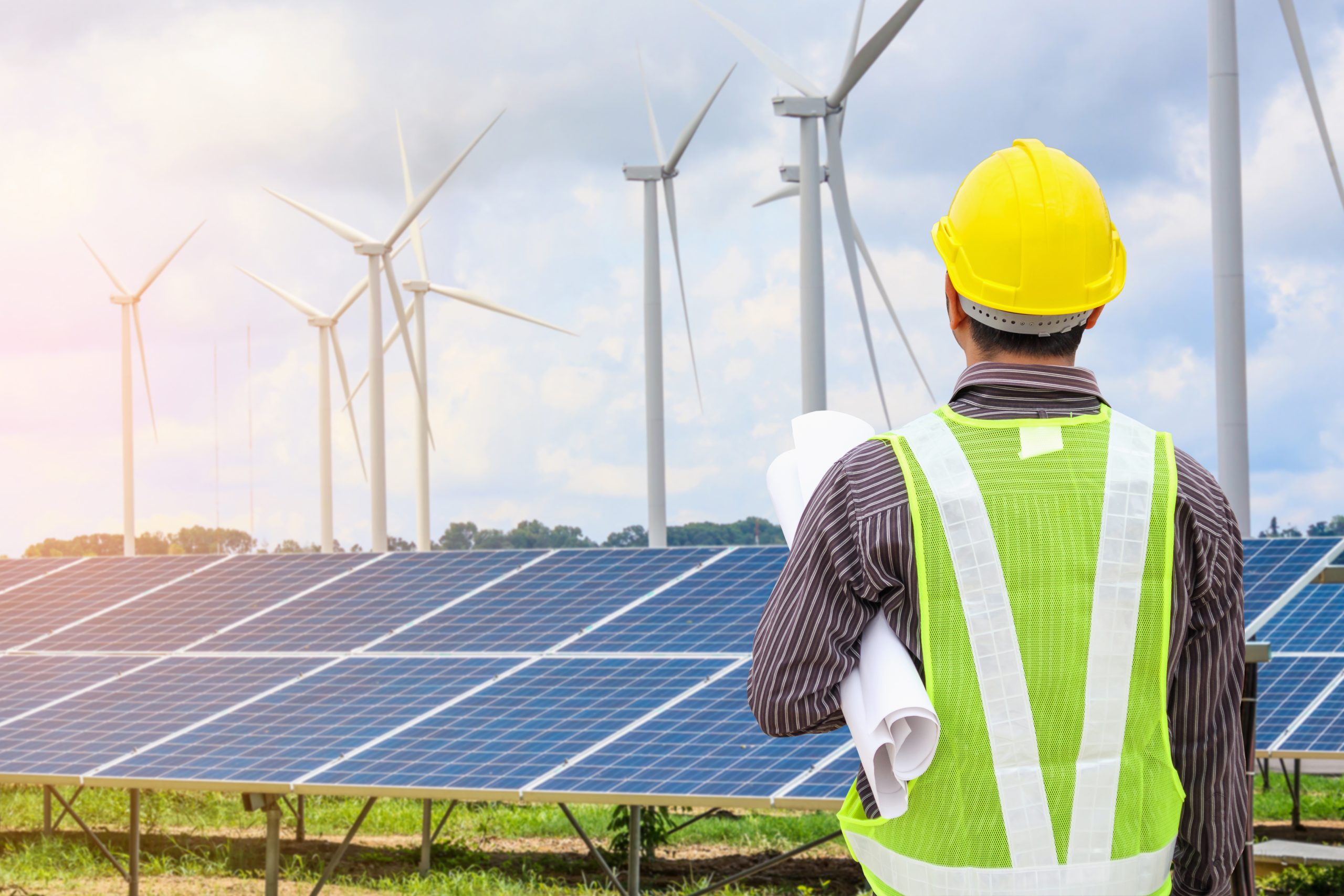Construction projects continue to drive the region

All eyes are on the massive mega and gigaprojects as they continue to attract widespread attention and investment
The construction sector across the GCC is rapidly expanding, driven by ambitious infrastructure projects and a strategic push towards economic diversification. In 2023, a record $235bn-worth of contracts were awarded in the region, more than double the 2022 number.
Growth in this sector presents remarkable opportunities for investors and stakeholders, offering the potential for significant returns and sustainable development.
“From large infrastructure projects to masterplan developments, there has been a concerted effort to drive economic growth, enhance connectivity and improve the quality of life across communities,” says Arun Mathur, executive vice-president and global head of contracting at Mashreq.
“These projects are not just about building physical structures, but fostering regional integration and creating connected and resilient economies.”
Overall, the recent strong growth in project activity is a notable recovery from the more sluggish period experienced during 2016-22, when the average annual value of contract awards in the region was just $108bn. The current market conditions are reminiscent of the oil sector boom of 2010-14, and the real estate expansion of 2005-08, albeit with some differences.
“It’s probably the second-biggest peak we have seen,” says Maher Merehbi, CEO at Arabian Construction Company, one of the UAE’s largest contractors. “The lessons from the previous peak taught us to prioritise predictable projects with strong fundamentals over potentially challenging iconic developments.”
During a live webinar organised by Mashreq and MEED, industry experts discussed current trends, challenges and opportunities in the regional construction market.
They highlighted how major events such as Dubai’s Expo 2022, Qatar’s World Cup 2022 and the upcoming Expo 2030 and World Cup 2034 in Saudi Arabia serve as key drivers in accelerating real estate projects designed to support economic diversification.
Project impetus
The GCC, particularly the UAE and Saudi Arabia, are among the world’s most active construction markets, accounting for 80-90% of major projects in the region.
Over the past decade, substantial advancements have been achieved across infrastructure projects, including railway connectivity, electricity transmission and mobility.
A significant shift is under way, broadening the focus beyond traditional construction.
“Although the economies of these countries remain heavily reliant on petroleum, the past three to five years have witnessed a significant move towards projects centred on entertainment, tourism and culture, particularly in Saudi Arabia,” says Mark Smith, partner and infrastructure and capital projects lead at Deloitte.
Gigaprojects such as Seven and Qiddiya – now merged – in Saudi Arabia are geared towards creating new entertainment destinations for a sector that has until now been neglected. Likewise, the development of hotels along the Red Sea coast is emblematic of the kingdom’s desire to diversify and create new sectors.
Between 2017 and 2020, just $4.6bn-worth of entertainment and leisure projects were built in the kingdom. Over the past three years, this has nearly quadrupled to $16.3bn.
Meanwhile, in the UAE, the rise in private sector real estate developments and major infrastructure schemes has led to the rollout of megaprojects including Etihad Rail, the Dubai Metro’s Blue Line project and the delayed expansion of Al-Maktoum International airport.
The industry is expected to register an annual average growth of 4.2% from 2025 to 2028, supported by investments as part of the Oman Vision 2040 Plan, under which the government intends to allocate RO20bn ($52bn) to the tourism sector.
Financing
This fast-growing market requires the banking community to help fund the expansion. However, banks, still recovering from previous setbacks, remain cautious about real estate and construction.
“To encourage banks, the framework within the sector must change, prompting commitment to capital and financing,” says Merehbi. “Performance bonds and unconditional on-demand guarantees must be eliminated, having been abused in the past.”
Additionally, access to credit is equally important for handling a variety of business expenses related to a particular project.
Several contractors are increasingly looking to use export credit agency funding due to its competitive advantage and improved cash flow.
“There remains a strong appetite from export agency organisations and clients for exploring borrowing routes. This trend will continue at pace,” says David Clifton, regional director at global consultancy AtkinsRealis.
“Mergers and acquisitions (M&A) are also trending, with entities acquiring established asset classes both within and outside the region.”
Despite these advantages, significant challenges remain. Most new developers enter the market without existing construction assets, which complicates borrowing processes and securing funding due to a lack of collateral.
For Saudi Arabia, while the kingdom attracts substantial investments, it also faces challenges, with multiple projects competing for the same limited pool of resources, necessitating support from the Public Investment Fund or sovereign guarantees to secure financing.
Backed by the cash-rich national oil companies, finance takes a less prominent role in the hydrocarbons projects market. “In Abu Dhabi, the existing wealth and capital make external funding slightly less attractive,” notes Clifton.
Abu Dhabi National Oil Company (Adnoc), for example, is deploying capital with a $150bn capex and an M&A programme for the coming years without needing to tap into the markets.
Another option is to attract private sector local and international investment to alleviate the financing strain and benefit from their experience and knowledge. “You will continue to see this growing trend,” Clifton emphasises, noting that funding options remain available despite the challenges.
As the market intensifies and continues to draw investment, attracting and maintaining investor confidence becomes paramount to drive further growth and innovation.
“To achieve this objective, ensuring transparency in cost structures is essential for both domestic and foreign investors,” says Smith. “When costs are clear and transparent, ambitious plans can be adjusted to present more realistic and deliverable projects.”
Additionally, maintaining a balance between speed to market and cost efficiency is becoming critical as projects must deliver a strong return on investment to be viable and sustainable in a competitive market.
Supply chain concerns
Historically, the health of the supply chain has been inconsistent, especially between 2015 and 2020, when many companies went out of business or suffered financial losses.
While projects continue to grow in number, the surge in demand continues to strain the supply chain. Increasing internal resources and support from subcontractors and suppliers is essential to meet this growing need for contracting capacity, manpower, equipment and materials.
Tensions are particularly evident in the building construction sector, where subcontractors and factory operators struggle to meet growing needs.
While some sectors find relief by sourcing supplies globally, the construction industry still faces significant pinch points. “The current market includes suppliers still recovering from previous downturns, limiting the number of larger companies and smaller newcomers suitable for minor projects,” says Merehbi.
This imbalance between supply and demand is driving up costs. “We definitely see a tendency towards inflationary prices in various areas of the supply chain,” says Merehbi. “This strain is particularly acute in areas like electromechanical works and facades, where setting up supply chains quickly to meet the increasing demand is difficult.”
Moreover, logistical challenges tend to emerge, particularly in economies such as Saudi Arabia, where the physical capacity to bring in global supplies is a significant concern due to the remote nature of some projects such as Neom, port congestion and inefficient transportation networks.
“If companies aim to expand, addressing supply chain concerns is critical, as it is among the first to encounter issues,” Clifton remarks, indicating a need for a more robust and flexible logistical framework to support these massive projects.
Overall, proactive steps must be taken to address supply chain issues. “Forward pricing and long-term procurement strategies are necessary to lock in required materials for maintaining delivery confidence and investor trust,” says Smith.
Eventually, there is a ‘leap of faith’ involved, as committing large capital investments into the supply chain carries risks if future demand does not materialise as expected.
Sustainability drives finance
The emphasis on sustainability is reshaping financial strategies in the construction industry, driving a shift towards long-term investments, lifecycle cost analysis and the integration of environmentally friendly materials and practices.
In recent years, foreign investments have been pivotal in driving sustainable projects, with experts predicting a significant push towards net-zero initiatives.
The official net-zero targets of 2050 for the UAE and 2060 for Saudi Arabia and Bahrain, along with the Cop28 climate summit, have encouraged companies to take action.
“There is an increasing push around sustainability and low-carbon projects with stringent sustainability requirements, like those in the European Union, are becoming prevalent in the region,” says Smith.
“Adopting a lifecycle cost model is crucial in this transition and while sustainability initiatives may raise initial construction costs, they offer long-term financial benefits.”
This approach aligns with the expectations of foreign investors, who are likely to mandate sustainability and climate considerations in their projects moving forward.
Clifton believes that as people start to understand lifecycle costs better, there is a drive towards sustainable assets, especially among larger developers in Saudi Arabia and the UAE.
“Building costs might only represent 20-25% of an asset’s total lifestyle costs,” he says. “The real challenge stands in the build-to-sell market, where sustainability features may not be prioritised unless marketed as value-added.”
Merehbi calls for a comprehensive approach, emphasising the need for top-down regulations, thorough preparation for designs and an adaptive supply chain. A robust, all-encompassing strategy is essential to integrate sustainability effectively across all levels of the construction industry.
He advocates for a step-change in implementation, moving beyond current standards to incorporate materials that support sustainability and reusability.
“It’s time to take the next step and begin implementing materials that can be recirculated and reused,” he concludes.




